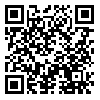BibTeX | RIS | EndNote | Medlars | ProCite | Reference Manager | RefWorks
Send citation to:
URL: http://journal.muq.ac.ir/article-1-396-en.html
2- Tehran University of Medical Sciences ,
3- Tehran University of Medical Sciences
Backgroundand Objectives: Healthcare workers (HCWs) are one of the most important jobs in exposure to Needle Stick (NS) and, therefore, are in risk of infection to diseases such as Hepatitis B (HB) and AIDS. The aim of this study was to identify and assess risk of injuries caused by needle and sharps in healthcare personnel of a hospital in Tehran.
Methods: In this study, hazard analysis method of Healthcare Failure Mode and Effect Analysis (HFMEA) was selected. After several meetings with related experts, by the help of a provided checklist, hazardous processes related to NS injuries were identified and finally assessed by HFMEA method.
Results: Potential causes of injuries included recapping, sudden shake of patient organs, lack of personnel, and slip. For most of the causes there were no control measures. Sudden shake of patient's arm and heavy workload were recognized as high risk scores due to unskilled injector. Also for 53% of the studied cases, a score risk of more than 8 was recorded.
Conclusion: As the results show, a major portion of potential causes of injuries had a high risk score, that is due to lack of a clear safety program or system to control the risk. Thus hospital manager should consider and control the causes according to the recommendations from risk assessment team. Totally HFMEA is an appropriate technique to analyze hazards related to NS injuries and predict effective measures to reduce related risks.
Received: 2016/03/10 | Accepted: 2016/03/10 | Published: 2016/03/10
| Rights and permissions | |
 |
This work is licensed under a Creative Commons Attribution-NonCommercial 4.0 International License. |







